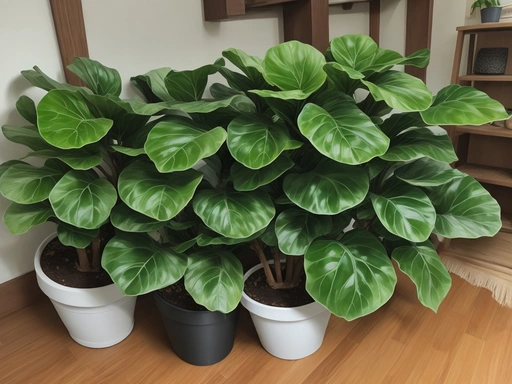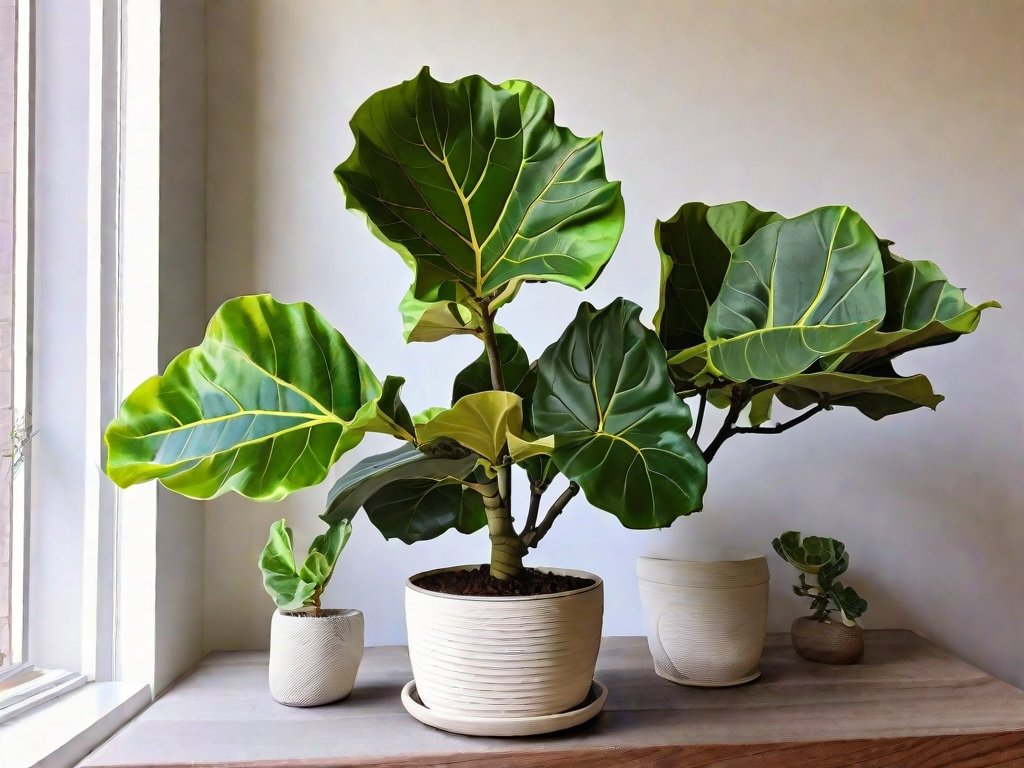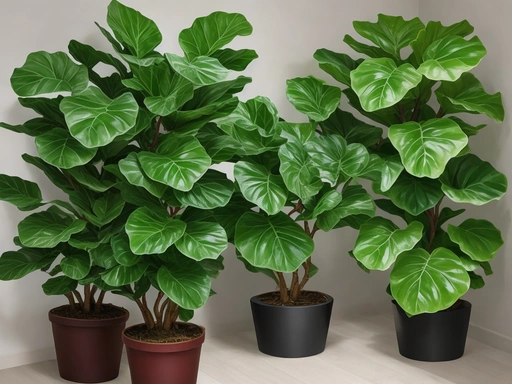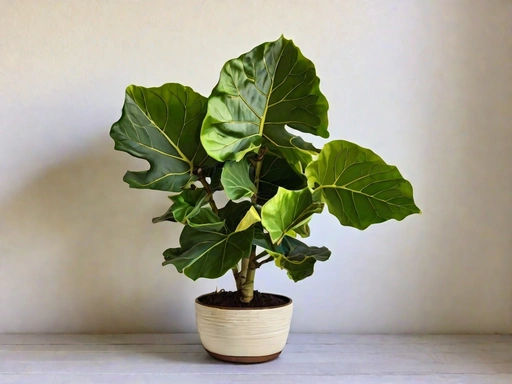Troubleshooting Fiddle-Leaf Fig Yellow Leaves: Expert Tips and Tricks!
Key Takeaways:
- Fiddle-leaf fig yellow leaves may be caused by overwatering or underwatering.
- Insufficient light can also lead to yellow leaves on a fiddle-leaf fig plant.
- Nutritional deficiencies, especially lack of nitrogen, can be a reason for yellowing leaves.
- Pests like spider mites or scale insects can cause yellowing of fiddle-leaf fig leaves.
Are your fiddle-leaf fig leaves turning yellow?
Don’t panic! I’m here to help you troubleshoot the problem and get your beloved plant back to its vibrant green self.
In this article, we’ll explore the common causes of yellow leaves on fiddle-leaf fig plants, how to diagnose the underlying issues, and the best solutions to address them.
From lack of sunlight to improper watering techniques and nutritional deficiencies, we’ll cover it all.
So, grab your gardening gloves and let’s dive into the world of fiddle-leaf fig troubleshooting together!
| Fiddle-Leaf Fig Yellow Leaves | |
|---|---|
| Possible Causes | Solutions |
| Insufficient Light | Place the plant in bright, indirect sunlight or use artificial grow lights. |
| Overwatering | Allow the soil to dry out partially between waterings and ensure proper drainage. |
| Underwatering | Water the plant thoroughly when the top inch of soil feels dry. |
| Nutritional Deficiency | Fertilize regularly with a balanced houseplant fertilizer. |
| Pest Infestation | Inspect the plant for pests and treat accordingly with organic or chemical pest control. |
Common Causes of Yellow Leaves on Fiddle-leaf Fig Plants
Yellow leaves on fiddle-leaf fig plants can be caused by lack of sunlight, overwatering, underwatering, improper soil pH, or nutritional deficiencies.
Lack of Sunlight
Lack of sunlight can cause yellow leaves on fiddle-leaf fig plants. These plants thrive in bright, indirect light, so when they don’t get enough sun, their leaves can become pale and yellow.
To address this issue, try moving your plant to a brighter location or consider using artificial grow lights to supplement the natural light.

Overwatering
Overwatering can cause yellow leaves on fiddle-leaf fig plants.
It leads to root rot, which prevents the roots from absorbing nutrients properly.
Signs of overwatering include wilting, yellowing, and soggy soil.
To address overwatering, adjust your watering schedule and allow the soil to dry out between waterings.
Underwatering
Underwatering is a common cause of yellow leaves on fiddle-leaf fig plants. When a fiddle-leaf fig doesn’t receive enough water, its leaves can turn yellow and eventually brown.
To diagnose if underwatering is the issue, check the soil moisture level.
If the soil is dry, it’s likely that your plant needs more water. To remedy underwatering, make sure to water your fiddle-leaf fig thoroughly and consistently, allowing the water to drain out from the bottom.

Improper Soil pH
Improper soil pH can cause yellow leaves on fiddle-leaf fig plants. Fiddle-leaf figs prefer a slightly acidic to neutral pH level between 6.0 and 7.0. If the soil pH is too high or too low, it can affect the plant’s ability to absorb nutrients properly, resulting in yellowing leaves.
To ensure optimal soil pH, test the soil and adjust it accordingly using additives like sulfur or limestone.

Nutritional Deficiencies
Nutritional deficiencies in fiddle-leaf fig plants can cause yellow leaves. Common deficiencies include nitrogen, magnesium, and iron.
To address this, use a balanced fertilizer specifically formulated for houseplants.
Additionally, consider adding supplements like Epsom salt and chelated iron to provide the necessary nutrients.
How to Diagnose the Cause of Yellow Leaves on Fiddle-leaf Fig Plants
To determine why your fiddle-leaf fig leaves are turning yellow, there are a few key factors to consider. Assess sunlight exposure, check soil moisture levels, test soil pH, and identify nutritional deficiencies.
Assessing Sunlight Exposure
Assessing sunlight exposure is crucial when troubleshooting yellow leaves on fiddle-leaf fig plants.
Ensure your plant is getting enough light by observing its location.
If it’s near a window receiving bright, indirect sunlight for at least 6 hours a day, the exposure is likely adequate.
If not, consider moving it to a better-lit spot or supplementing with artificial light.
Checking Soil Moisture Levels
To check the soil moisture levels of your fiddle-leaf fig plant, simply stick your finger about an inch into the soil. If it feels dry, then it’s time to water.
If it feels damp, hold off on watering until it dries out a bit.
Regularly checking the moisture levels will help you maintain the right balance for your plant’s needs.
Testing Soil pH
Testing soil pH is an important step in diagnosing the cause of yellow leaves on fiddle-leaf fig plants.
You can test the soil pH using a pH testing kit, which is easily available at gardening stores.
Simply follow the instructions on the kit to obtain a soil sample, and then use the pH testing solution provided to determine the pH level of your soil.
This will help you identify whether the soil pH is a contributing factor to the yellowing leaves.
Identifying Nutritional Deficiencies
Identifying nutritional deficiencies in fiddle-leaf fig plants can be done by observing the symptoms on the leaves. Yellow leaves with green veins may indicate iron deficiency, while brown spots can be a sign of potassium deficiency.
Pale leaves could mean a lack of nitrogen, and yellowing between veins might suggest a magnesium deficiency.
Troubleshooting Yellow Leaves on Fiddle-leaf Fig Plants
Having yellow leaves on your fiddle-leaf fig plant?
Here’s how to troubleshoot the issue.
Addressing Lack of Sunlight
To address lack of sunlight for your fiddle-leaf fig plant, try placing it near a bright, sunny window.
If that’s not possible, consider using artificial grow lights to provide the necessary light.
Rotate the plant periodically to ensure all sides receive equal exposure.
Correcting Overwatering Issues
To correct overwatering issues in fiddle-leaf fig plants, you need to adjust your watering habits. Start by allowing the top inch of soil to dry out before watering again.
Ensure proper drainage by using well-draining soil and a pot with drainage holes.
Also, avoid watering on a strict schedule and instead, only water when the plant needs it. Let the soil determine when it’s time for watering.
Remedying Underwatering Problems
To remedy underwatering problems in your fiddle-leaf fig plant, make sure to water it thoroughly whenever the top inch of soil feels dry. Use room temperature water and allow it to drain completely.
Consider placing the plant in a tray with water to increase humidity.
Avoid overwatering to prevent root rot.
Adjusting Soil pH
Adjusting soil pH is crucial for fiddle-leaf fig plants.
To lower pH, add organic matter like compost or peat moss.
To raise pH, add lime.
Test soil regularly to monitor pH levels and make necessary adjustments.
Maintain a slightly acidic pH between 6.0 and 7.0 for healthy plant growth.
Treating Nutritional Deficiencies
To treat nutritional deficiencies in fiddle-leaf fig plants, you can start by using a balanced fertilizer specifically formulated for indoor plants.
Look for a fertilizer with a higher nitrogen content, as this will help promote healthy green foliage.
Additionally, you can consider supplementing with micronutrients like iron and magnesium, which are commonly lacking in indoor environments.
Always follow the instructions on the fertilizer packaging and be cautious not to over-fertilize, as this can cause its own set of problems.
Regularly monitoring and adjusting the nutrient levels in the soil will help promote healthy growth and prevent further leaf discoloration.
How to Prevent Yellow Leaves on Fiddle-leaf Fig Plants
To prevent yellow leaves on your fiddle-leaf fig plants, make sure they receive adequate sunlight and water them properly.
Additionally, maintain optimal soil pH and ensure nutrient balance for healthy foliage.
Providing Adequate Sunlight
To provide adequate sunlight for your fiddle-leaf fig plant, find a bright spot near a window where it can receive indirect sunlight.
Avoid placing it in direct sunlight as it can scorch the leaves.
Rotate the plant occasionally to ensure even exposure.
Monitoring its light needs will help keep its leaves vibrant and prevent them from turning yellow.
Proper Watering Techniques
To properly water your fiddle-leaf fig plant, make sure to:
- Wait for the top inch of soil to dry out before watering again.
- Water thoroughly until excess water drains out from the bottom of the pot.
- Avoid overwatering to prevent root rot.
- Use room temperature water and avoid using hard tap water.
- Adjust watering frequency based on environmental conditions (humidity, temperature.
- Consider using a moisture meter to accurately gauge soil moisture levels.
Maintaining Optimal Soil pH
Maintaining optimal soil pH is vital for the health of your fiddle-leaf fig plant.
Here’s how to do it:
- Test the pH of your soil using a soil testing kit.
- Adjust the pH as needed by adding amendments like dolomite lime to raise pH or sulfur to lower pH.
- Aim for a pH between 6.0 and 7.0, which is slightly acidic to neutral.
- Monitor the pH regularly and make adjustments if necessary.
- Avoid using tap water, as it can increase the soil’s pH over time.
- Remember to water your fiddle-leaf fig plant with water that has been pH balanced or filtered.
Maintaining the right soil pH will help ensure your plant gets the nutrients it needs for healthy growth.
Ensuring Nutrient Balance
To ensure nutrient balance for your fiddle-leaf fig plant, it’s important to provide it with the necessary nutrients it needs to thrive.
This can be achieved by using a balanced fertilizer specifically formulated for houseplants.
Make sure to follow the instructions on the packaging for proper application.
Additionally, regularly monitoring the plant’s nutrient needs and adjusting the fertilizer accordingly will help maintain a healthy balance.
Frequently Asked Questions
Can yellow leaves turn green again?
Yes, yellow leaves on a fiddle-leaf fig plant can turn green again under the right conditions.
By addressing the underlying cause (such as lack of sunlight, overwatering, underwatering, improper soil pH, or nutritional deficiencies) and providing the necessary care and adjustments, the leaves can regain their healthy green color.
It may take time and patience, but with proper care, your fiddle-leaf fig can thrive.
How often should I water my fiddle-leaf fig plant?
Water your fiddle-leaf fig plant when the top inch of soil feels dry to the touch. Stick your finger into the soil or use a moisture meter to check.
Avoid overwatering, as fiddle-leaf figs prefer slightly drier conditions.
Generally, watering once every 1-2 weeks is sufficient, but adjust based on your plant’s specific needs and environmental conditions.
Can I use tap water for watering my fiddle-leaf fig?
Yes, you can use tap water for watering your fiddle-leaf fig.
However, it’s important to note that tap water can contain chemicals like chlorine and fluoride, which can be harmful to your plant over time.
To minimize the risk, you can let tap water sit out overnight to allow some of these chemicals to evaporate before using it on your fiddle-leaf fig.
Another option is to use filtered or distilled water, which will ensure that you’re providing your plant with pure water.
Which nutrients are essential for fiddle-leaf fig plants?
Fiddle-leaf fig plants require three key nutrients: nitrogen, phosphorus, and potassium. These are known as macronutrients and are necessary for overall plant growth and development.
Additionally, they also need micronutrients such as iron, manganese, and zinc to maintain healthy foliage.
Providing a well-balanced fertilizer can help ensure that your fiddle-leaf fig receives all the essential nutrients it needs to thrive.
Is it normal for fiddle-leaf fig leaves to turn yellow during winter?
Yes, it is normal for fiddle-leaf fig leaves to turn yellow during winter.
The lower light levels and cooler temperatures can cause the leaves to naturally yellow and drop.
However, if the yellowing is excessive or accompanied by other symptoms, it may indicate a problem that needs to be addressed.
Final Verdict
Yellow leaves on fiddle-leaf fig plants can be caused by several factors, including lack of sunlight, overwatering, underwatering, improper soil pH, and nutritional deficiencies. To diagnose the cause, assess sunlight exposure, soil moisture levels, soil pH, and nutrient levels.
Troubleshoot the issue by addressing sunlight, watering, soil pH, and nutritional deficiencies.
To prevent yellow leaves, provide adequate sunlight, practice proper watering techniques, maintain optimal soil pH, and ensure a balance of nutrients. By taking these steps, you can help your fiddle-leaf fig plants thrive and maintain their lush green foliage.







